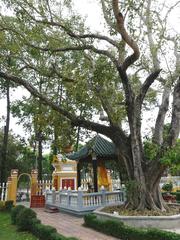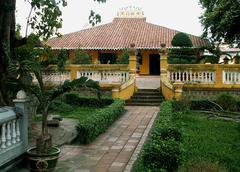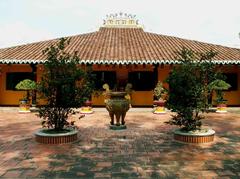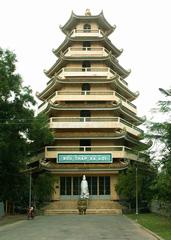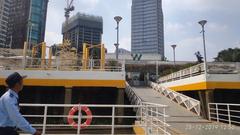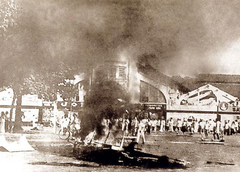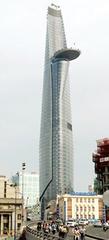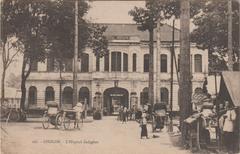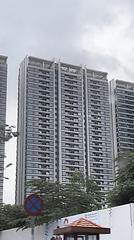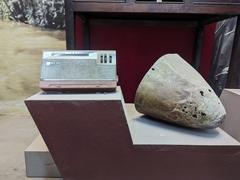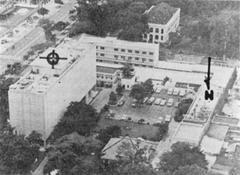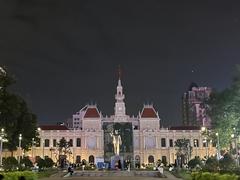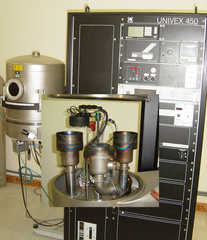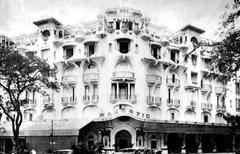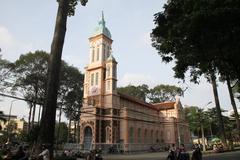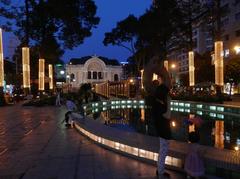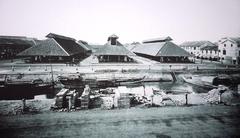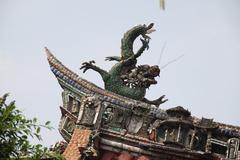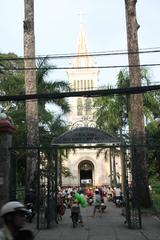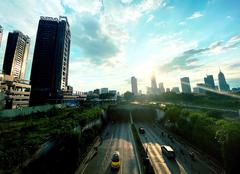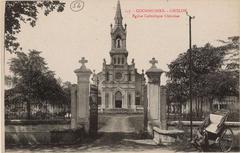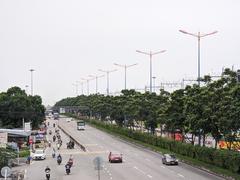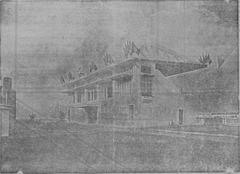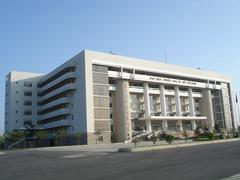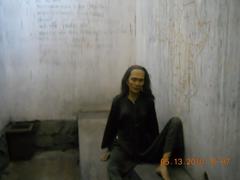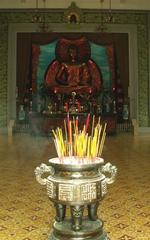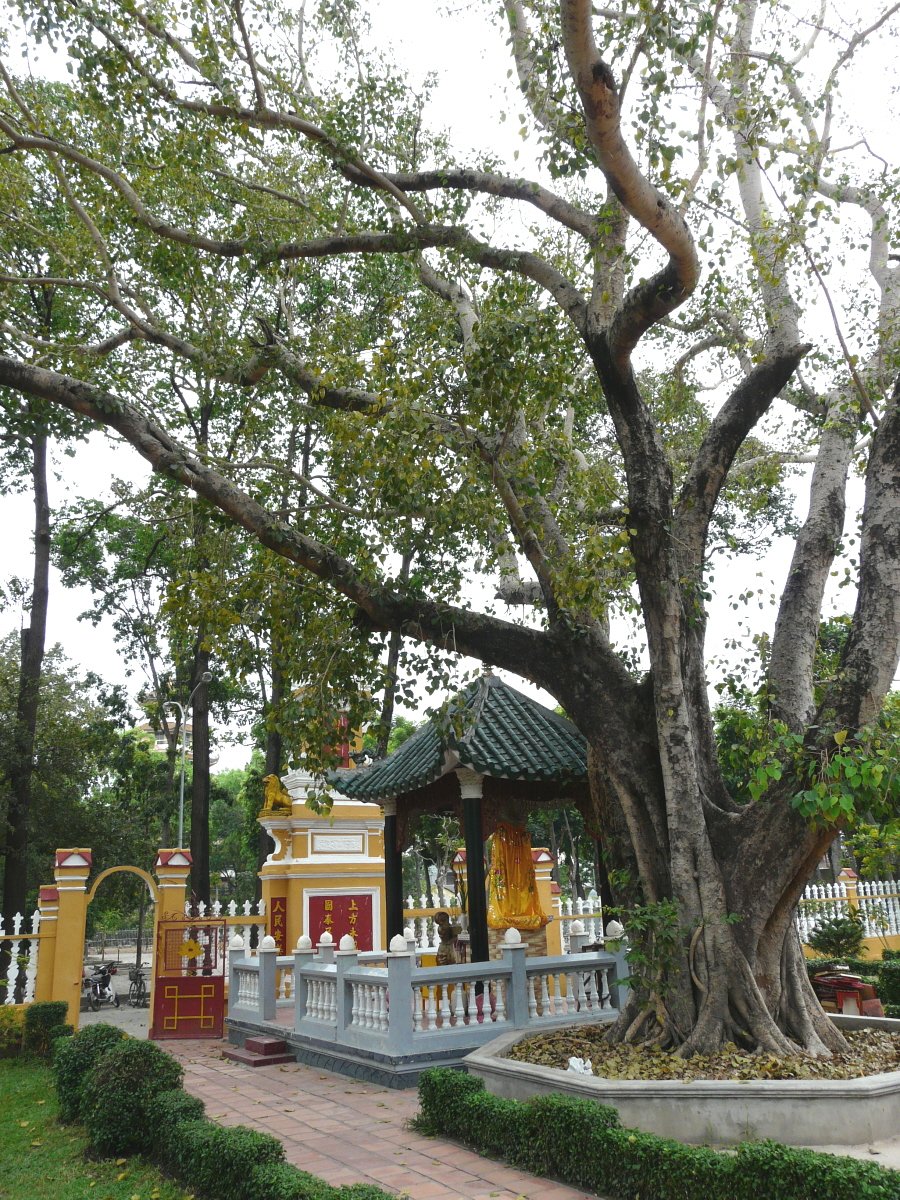
Giác Lâm Pagoda Visiting Hours, Tickets, and Comprehensive Guide to Ho Chi Minh City’s Historical Treasure
Date: 15/06/2025
Introduction
Giác Lâm Pagoda, nestled in the Tân Bình District, is not only one of Ho Chi Minh City’s oldest Buddhist temples but also a living testament to Vietnam’s spiritual and cultural heritage. Established in 1744, this revered site offers visitors an immersive journey through centuries of Buddhist tradition, architectural artistry, and community engagement. Whether you are a history enthusiast, spiritual seeker, or simply curious about Vietnam’s past, this guide provides detailed information on visiting hours, tickets, accessibility, historical background, travel tips, and nearby attractions to ensure a meaningful and well-prepared visit (Vietnam Online; Vietnam Travel; Exotic Travel Vietnam).
Historical and Cultural Significance
Founded during the Nguyễn Dynasty by Lý Thụy Long, Giác Lâm Pagoda stands as a beacon of Buddhist teaching and cultural preservation. Its architectural style harmoniously blends Vietnamese and Chinese influences, featuring intricate wooden carvings, gilded altars, and the iconic seven-story stupa. Throughout its history, the pagoda has served as a center for religious practice, education, and social gathering—surviving colonial periods, political upheaval, and rapid urbanization (Vietnam National Administration of Tourism; Vietnam Guide).
Location and Accessibility
- Address: 565 Lạc Long Quân Street, Ward 10, Tân Bình District, Ho Chi Minh City, Vietnam
- Distance from City Center: ~7 kilometers; ~15–20 minutes by taxi or ride-hailing app
- Public Transport: Bus routes 27 and 91 stop at “Chùa Giác Lâm” (Ho Chi Minh City Bus Map)
- Parking: Secure motorbike and car parking available for a nominal fee
The pagoda’s grounds are mostly flat with ramps at major entrances, offering reasonable accessibility for visitors with mobility needs. While the main prayer halls and gardens are accessible, the upper levels of the seven-story stupa require stairs.
Visiting Hours and Admission
- Opening Hours: Daily from 6:00 AM to 9:00 PM
- Entrance Fee: Free; voluntary donations are welcomed to support maintenance and charitable activities (Vietnam Tourism)
Note: During major Buddhist festivals and holidays, opening hours may be adjusted. It’s advisable to check ahead during these periods for any changes.
Dress Code and Visitor Etiquette
As an active place of worship, respectful attire is required:
- Cover shoulders and knees; avoid sleeveless tops, shorts, or short skirts
- Remove shoes before entering prayer halls
- Speak softly and keep mobile devices on silent
- Photography is permitted in exterior areas and courtyards; request permission before photographing monks or ceremonies
- Do not touch religious artifacts or point feet toward altars (Vietnam Online)
Architectural and Artistic Highlights
Main Hall and Statues
The main hall (Đại Hùng Bảo Điện) features:
- 98 large wooden columns inscribed with gold lacquered parallel sentences
- The central statue of Amitabha Buddha, flanked by bodhisattvas Avalokiteshvara and Mahasthamaprapta
- The Eighteen Arhats—life-sized statues with unique expressions
- Over 113 ancient statues, including the Thousand-Handed Avalokiteshvara and the oldest wooden statue of the Buddha (Vietnamnet)
Seven-Story Stupa
- Constructed between 1970 and 1975, standing 32 meters tall
- Octagonal base with ascending tiers, each featuring Buddha statues and lotus motifs
- Houses relics of the Buddha and revered monks
- Offers panoramic city views from the upper floors (Vietnam Discovery)
Gardens and Outdoor Features
- Ancient Bodhi tree (planted from a Sri Lankan cutting in 1953)
- Frangipani, banyan, and bonsai trees
- Stone lanterns, animal statues, and tranquil courtyards
Facilities and Amenities
- Restrooms: Located near the entrance; basic facilities
- Shaded Seating: In garden areas for rest and reflection
- Souvenirs: Small stalls outside sell incense, flowers, and Buddhist amulets
- Dining: No on-site café, but local eateries are within walking distance
Guided Tours and Special Events
- Official English-language guided tours are limited, but local operators and city tour agencies often include Giác Lâm Pagoda on their itineraries (Saigon Free Walking Tours)
- Major Buddhist festivals, such as Vesak (Buddha’s Birthday) and Vu Lan, feature colorful ceremonies, rituals, and lantern lighting
- Early mornings offer tranquil photographic opportunities with soft lighting
Best Times to Visit
- Season: Dry season (December–April) for comfortable weather
- Day: Early mornings or weekday afternoons for fewer crowds
- Festivals: Visit during Vesak or Vu Lan for immersive cultural experiences
Accessibility for People with Disabilities
- Ramps at entrances and accessible pathways in the main courtyard and prayer halls
- The stupa and some upper areas require stair climbing and are not wheelchair accessible
Safety and Security
- The environment is safe and well-monitored by staff and volunteers
- Secure personal belongings, particularly during crowded festivals
- Emergency contacts for local police and medical services are posted near the entrance (Ho Chi Minh City Police)
Cultural Sensitivity and Participation
- Quietly observe or participate in rituals such as lighting incense
- Donations are appreciated and support temple maintenance and charity work
- During ceremonies, remain seated or stand quietly at the back
- When in doubt, follow the lead of local worshippers or politely ask staff for guidance (Vietnam Guide)
Nearby Attractions
Enhance your cultural exploration by visiting:
- Phú Thọ Hòa Tunnels: Underground resistance tunnels (3 km)
- Chợ Lớn (Chinatown): Historical district with temples and markets (15-minute taxi)
- Dam Sen Cultural Park: Family-friendly amusement park (2 km) (Dam Sen Park)
- War Remnants Museum, Jade Emperor Pagoda, Notre-Dame Cathedral Basilica: Historical landmarks in central Ho Chi Minh City
Frequently Asked Questions (FAQ)
Q: Is there an entrance fee?
A: No, admission is free; donations are welcomed.
Q: What are the opening hours?
A: Daily from 6:00 AM to 9:00 PM.
Q: Are guided tours available?
A: Guided tours are limited on-site, but local tour operators may include the pagoda in their city itineraries.
Q: Can I take photographs?
A: Yes, in courtyards and exteriors. Always request permission before photographing monks or ceremonies.
Q: Is the pagoda wheelchair accessible?
A: Main courtyards and ground-level halls are accessible; stupa and upper areas require stairs.
Practical Visitor Tips
- Weather: Dress for hot, humid conditions especially from March to May.
- Footwear: Easy-to-remove shoes are recommended.
- Language: Vietnamese is predominant; a translation app can be helpful.
- Cash: Bring small denominations for donations and small purchases.
- Respect: Maintain quiet, avoid public displays of affection, and supervise children.
- Hydration: Bring bottled water, as it is not provided on-site.
Visuals and Suggested Media
- Main entrance and seven-story stupa at sunrise (alt=“Giác Lâm Pagoda seven-story stupa at sunrise”)
- Interior of prayer halls and ancient statues
- Map of location and surrounding attractions
- Etiquette infographic for temple visitors
Internal Links
Conclusion and Call to Action
Giác Lâm Pagoda is a spiritual haven and cultural monument, seamlessly blending centuries of Buddhist devotion with artistic and architectural beauty. Its accessibility, free admission, and vibrant traditions make it a must-visit for anyone exploring Ho Chi Minh City. Plan your visit during the dry season, respect local customs, and consider enriching your experience with digital resources like the Audiala app for guided tours and real-time updates. For more cultural adventures, explore nearby landmarks and dive deeper into Vietnam’s rich Buddhist and historical heritage.
For the latest updates and travel guidance, visit the Vietnam National Administration of Tourism.
Key Takeaways
Giác Lâm Pagoda remains a serene sanctuary in bustling Ho Chi Minh City, drawing thousands of visitors and pilgrims each year. Its enduring role as a center of spiritual practice, cultural preservation, and community resilience is reflected in its well-maintained relics, statues, and gardens. Whether you seek tranquility, history, or cultural immersion, Giác Lâm Pagoda offers a unique window into Vietnam’s Buddhist tradition. Plan your visit to experience this living heritage site and enrich your understanding of Ho Chi Minh City’s vibrant cultural landscape (Vietnam National Administration of Tourism; Vietnam Guide; Vietnam Discovery).
Sources and Further Information
- Vietnam Online: Giác Lâm Pagoda
- Vietnam Travel: Giác Lâm Pagoda
- Exotic Travel Vietnam: Giác Lâm Pagoda
- Ho Chi Minh City Bus Map
- Vietnam National Administration of Tourism
- Vietnam Guide: Giác Lâm Pagoda
- Vietnam Discovery: Giác Lâm Pagoda
- Dam Sen Park
